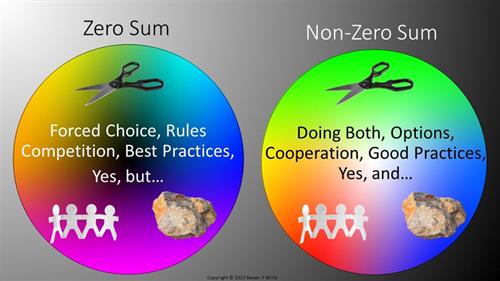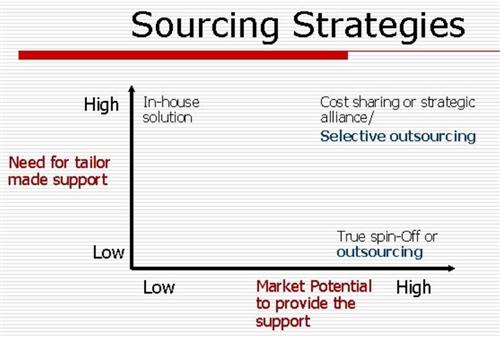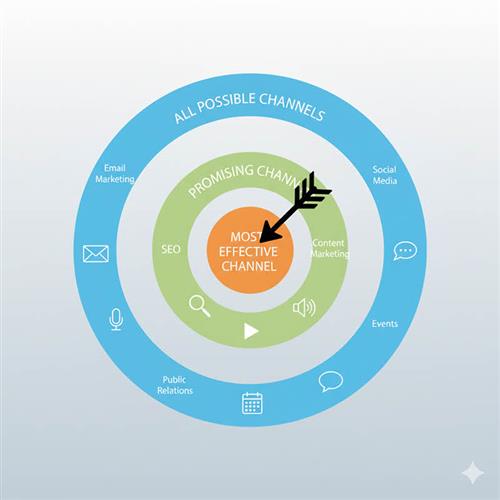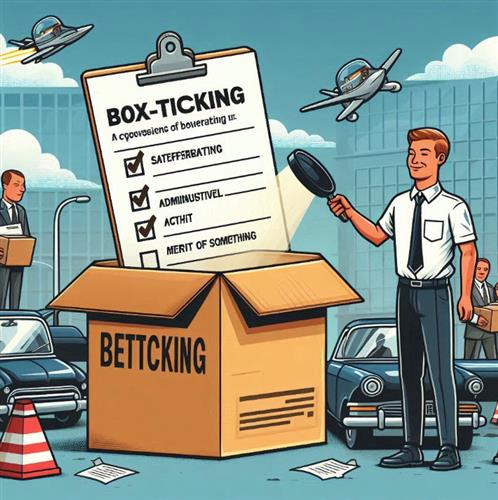
Software Myths and Realities
Last updated: November 01, 2023 Read in fullscreen view
- 01 Aug 2024
 The Standish Group report 83.9% of IT projects partially or completely fail 150/1772
The Standish Group report 83.9% of IT projects partially or completely fail 150/1772 - 13 Apr 2024
 Lessons on Teamwork and Leadership from Chinese story book "Journey to the West" 41/949
Lessons on Teamwork and Leadership from Chinese story book "Journey to the West" 41/949 - 02 Nov 2021
 What is Terms of Reference (ToR)? 23/1466
What is Terms of Reference (ToR)? 23/1466 - 18 Oct 2020
 How to use the "Knowns" and "Unknowns" technique to manage assumptions 21/989
How to use the "Knowns" and "Unknowns" technique to manage assumptions 21/989 - 01 Oct 2020
 Fail fast, learn faster with Agile methodology 13/973
Fail fast, learn faster with Agile methodology 13/973 - 03 Apr 2022
 Microsoft Solutions Framework (MSF) 12/1157
Microsoft Solutions Framework (MSF) 12/1157 - 12 Oct 2022
 14 Common Reasons Software Projects Fail (And How To Avoid Them) 10/504
14 Common Reasons Software Projects Fail (And How To Avoid Them) 10/504 - 18 Dec 2023
 The Cone of Uncertainty in Scrum & Requirement Definition 8/643
The Cone of Uncertainty in Scrum & Requirement Definition 8/643 - 10 Nov 2022
 Poor Code Indicators and How to Improve Your Code? 7/213
Poor Code Indicators and How to Improve Your Code? 7/213 - 19 Oct 2021
 Is gold plating good or bad in project management? 7/754
Is gold plating good or bad in project management? 7/754 - 18 Oct 2021
 Key Elements to Ramping Up a Large Team 7/1108
Key Elements to Ramping Up a Large Team 7/1108 - 13 Oct 2021
 Outsourcing Software Development: MVP, Proof of Concept (POC) and Prototyping. Which is better? 6/424
Outsourcing Software Development: MVP, Proof of Concept (POC) and Prototyping. Which is better? 6/424 - 06 Feb 2021
 Why fail fast and learn fast? 6/375
Why fail fast and learn fast? 6/375 - 28 Jul 2022
 POC, Prototypes, Pilots and MVP: What Are the Differences? 6/606
POC, Prototypes, Pilots and MVP: What Are the Differences? 6/606 - 01 Mar 2023
 Bug Prioritization - What are the 5 levels of priority? 6/207
Bug Prioritization - What are the 5 levels of priority? 6/207 - 07 Oct 2025
 Case Study: Using the “Messaging House” Framework to Build a Digital Transformation Roadmap 5/45
Case Study: Using the “Messaging House” Framework to Build a Digital Transformation Roadmap 5/45 - 31 Aug 2022
 What are the best practices for software contract negotiations? 5/215
What are the best practices for software contract negotiations? 5/215 - 05 Mar 2021
 How do you minimize risks when you outsource software development? 5/317
How do you minimize risks when you outsource software development? 5/317 - 14 Oct 2021
 Advantages and Disadvantages of Time and Material Contract (T&M) 4/789
Advantages and Disadvantages of Time and Material Contract (T&M) 4/789 - 12 Dec 2021
 Zero Sum Games Agile vs. Waterfall Project Management Methods 4/374
Zero Sum Games Agile vs. Waterfall Project Management Methods 4/374 - 04 Oct 2022
 Which ERP implementation strategy is right for your business? 4/278
Which ERP implementation strategy is right for your business? 4/278 - 01 Dec 2023
 Laws of Project Management 3/249
Laws of Project Management 3/249 - 10 Apr 2024
 The Parking Lot Method: Unlocking a Simple Secret to Supercharge Your Productivity 3/403
The Parking Lot Method: Unlocking a Simple Secret to Supercharge Your Productivity 3/403 - 05 Sep 2023
 The Cold Start Problem: How to Start and Scale Network Effects 3/167
The Cold Start Problem: How to Start and Scale Network Effects 3/167 - 31 Oct 2021
 Tips to Fail Fast With Outsourcing 3/375
Tips to Fail Fast With Outsourcing 3/375 - 18 Aug 2022
 What are the consequences of poor requirements with software development projects? 3/242
What are the consequences of poor requirements with software development projects? 3/242 - 07 Jul 2022
 Managing Project Execution Terms 3/379
Managing Project Execution Terms 3/379 - 08 Oct 2022
 KPI - The New Leadership 3/557
KPI - The New Leadership 3/557 - 18 Jul 2021
 How To Ramp Up An Offshore Software Development Team Quickly 3/516
How To Ramp Up An Offshore Software Development Team Quickly 3/516 - 28 Dec 2021
 8 types of pricing models in software development outsourcing 2/417
8 types of pricing models in software development outsourcing 2/417 - 28 Oct 2022
 Build Operate Transfer (B.O.T) Model in Software Outsourcing 2/361
Build Operate Transfer (B.O.T) Model in Software Outsourcing 2/361 - 04 Oct 2021
 Product Validation: The Key to Developing the Best Product Possible 2/295
Product Validation: The Key to Developing the Best Product Possible 2/295 - 14 Jun 2022
 Example and Excel template of a RACI chart in Software Development 2/707
Example and Excel template of a RACI chart in Software Development 2/707 - 15 May 2022
 20 Common Mistakes Made by New or Inexperienced Project Managers 2/247
20 Common Mistakes Made by New or Inexperienced Project Managers 2/247 - 23 Sep 2021
 INFOGRAPHIC: Top 9 Software Outsourcing Mistakes 2/411
INFOGRAPHIC: Top 9 Software Outsourcing Mistakes 2/411 - 17 Feb 2022
 Prioritizing Software Requirements with Kano Analysis 2/280
Prioritizing Software Requirements with Kano Analysis 2/280 - 13 Dec 2020
 Move fast, fail fast, fail-safe 2/292
Move fast, fail fast, fail-safe 2/292 - 05 Jun 2023
 Fractional, Part-Time (virtual) or Interim CTO: Who Will Cover Your Business Needs? 2/109
Fractional, Part-Time (virtual) or Interim CTO: Who Will Cover Your Business Needs? 2/109 - 26 Sep 2024
 Successful Project Management Techniques You Need to Look Out For 2/368
Successful Project Management Techniques You Need to Look Out For 2/368 - 01 May 2024
 Warren Buffett’s Golden Rule for Digital Transformation: Avoiding Tech Overload 2/188
Warren Buffett’s Golden Rule for Digital Transformation: Avoiding Tech Overload 2/188 - 10 Dec 2023
 Pain points of User Acceptance Testing (UAT) 2/416
Pain points of User Acceptance Testing (UAT) 2/416 - 12 Aug 2022
 What is End-to-end project management? 2/382
What is End-to-end project management? 2/382 - 02 May 2022
 What Is RAID in Project Management? (With Pros and Cons) 2/734
What Is RAID in Project Management? (With Pros and Cons) 2/734 - 24 Nov 2023
 The project management paradox: Achieving MORE by doing LESS 2/193
The project management paradox: Achieving MORE by doing LESS 2/193 - 07 Dec 2023
 12 project management myths to avoid 1/167
12 project management myths to avoid 1/167 - 26 Dec 2023
 Improving Meeting Effectiveness Through the Six Thinking Hats 1/205
Improving Meeting Effectiveness Through the Six Thinking Hats 1/205 - 05 Jan 2024
 Easy ASANA tips & tricks for you and your team 1/180
Easy ASANA tips & tricks for you and your team 1/180 - 11 Jan 2024
 What are the Benefits and Limitations of Augmented Intelligence? 1/434
What are the Benefits and Limitations of Augmented Intelligence? 1/434 - 12 Aug 2024
 Understanding Google Analytics in Mumbai: A Beginner's Guide 1/84
Understanding Google Analytics in Mumbai: A Beginner's Guide 1/84 - 01 Mar 2024
 10 Project Management Myths 1/120
10 Project Management Myths 1/120 - 22 May 2022
 What are common mistakes that new or inexperienced managers make? 1/243
What are common mistakes that new or inexperienced managers make? 1/243 - 27 Jan 2020
 Should a project manager push developers to work more hours due to mistakes of manager schedule setting? 1/412
Should a project manager push developers to work more hours due to mistakes of manager schedule setting? 1/412 - 19 Apr 2021
 7 Most Common Time-Wasters For Software Development 1/525
7 Most Common Time-Wasters For Software Development 1/525 - 17 Oct 2021
 Does Fast Tracking increase project cost? /348
Does Fast Tracking increase project cost? /348 - 19 Oct 2021
 Software development life cycles /628
Software development life cycles /628 - 13 Jan 2020
 Quiz: Test your understanding project cost management /568
Quiz: Test your understanding project cost management /568 - 06 Nov 2019
 How to Access Software Project Size? /236
How to Access Software Project Size? /236 - 02 Dec 2021
 3 Ways to Avoid Scope Creep in IT Consulting /192
3 Ways to Avoid Scope Creep in IT Consulting /192 - 09 May 2022
 Build one to throw away vs Second-system effect: What are differences? /297
Build one to throw away vs Second-system effect: What are differences? /297 - 10 May 2022
 Levels of Teamwork /180
Levels of Teamwork /180 - 01 Aug 2022
 Is planning "set it and forget it" or "set it and check it"? /264
Is planning "set it and forget it" or "set it and check it"? /264 - 06 Mar 2024
 [SemRush] What Are LSI Keywords & Why They Don‘t Matter /131
[SemRush] What Are LSI Keywords & Why They Don‘t Matter /131 - 12 Mar 2024
 How do you create FOMO in software prospects? /127
How do you create FOMO in software prospects? /127 - 23 Jun 2024
 Best Practices for Managing Project Escalations /183
Best Practices for Managing Project Escalations /183 - 21 Jun 2024
 Dead Horses and the Escalation of Commitment /123
Dead Horses and the Escalation of Commitment /123 - 02 Jun 2024
 Reviving Ancient Wisdom: The Spiritual Side of Project Management /204
Reviving Ancient Wisdom: The Spiritual Side of Project Management /204 - 14 Mar 2024
 Why should you opt for software localization from a professional agency? /117
Why should you opt for software localization from a professional agency? /117 - 30 Nov 2023
 Project Managers, Focus on Outcomes — Not Deliverables /143
Project Managers, Focus on Outcomes — Not Deliverables /143 - 02 Nov 2022
 Difference between Change Management and Project Management /216
Difference between Change Management and Project Management /216 - 06 Jun 2022
 Change Management at the Project Level /292
Change Management at the Project Level /292 - 03 Jan 2023
 Organizing your agile teams? Think about M.A.T (Mastery, Autonomy, Purpose) /333
Organizing your agile teams? Think about M.A.T (Mastery, Autonomy, Purpose) /333
Different Types of Software Myths
Management Software Myths
The manager who is responsible for developing software is often under pressure regarding many attributes of the software such as:
- The budget of the software.
- Delivering the software within the time limit.
- Enhance the quality of the software.
- Providing customer care services, etc.
Under such pressure, even the software manager develops belief in a software myth that lessens. These software myths grasped by the software manager lessen his pressure up to a certain level but this is temporary.
Let us discuss some myths perceived by the software manager:
- Management Myth 1
The software building team has a book that explains all standards and procedures that are required for developing software.
The manager has a myth that the book provides everything to the team required for the software development.
Fact:
Though there exists a book that has all the standards and procedures required to develop software. But are the developers aware of its existence? Do they ever refer to such books? Is the book complete?
Can it be referred to? Does the book help the developers to stick to the time-to-deliver even maintain the quality of the software?
Most of the time the answer to such questions is no.
- Management Myth 2
If more programmers are added to the software development team we can stick to the schedule.
Fact:
Developing software is totally different from manufacturing a product. It is not a mechanistic process. In fact, adding up more people in the team would rather delay the delivery of the software.
This is because when new members are introduced to the team, the members already working on the software will have to explain the work done till now. This will even reduce the time that has to spend on the development of the software. People can be added, but only under certain circumstances. Individuals who were working must spend time teaching newcomers when more people are added, limiting the amount of time spent on product development activity. People can be added, but only in a well-coordinated and systematic fashion.
Although more members can be added to the team in a planned and co-ordinate manner.
- Management Myth 3
Outsourcing the software project to a third party will let the manager relax. The third-party will be solely responsible for the development of the software.
Fact:
If the company has outsourced the software project to a third party, it means the company is not aware of the details of the software project. It doesn’t know how to manage and control the software project.
-
Management Myth 4
My workers have cutting-edge software development tools. The addition of the latest hardware programs will improve the software development.
Fact::
- The role of the latest hardware is not very high on standard software development; instead (CASE) Engineering tools help the computer, they are more important than hardware to produce quality and productivity.
- Hence, the hardware resources are misused.
Customer Myths
The customer is one who requests software either from a software engineer, a technical group, or the marketing sales department. The customer always requests the software under a contract.
The customer has some myths regarding the development of software. Hence the customer develops false expectations which lead to dissatisfaction with the developer. Let us discuss some myths developed by the customer.
- Customer Myth 1
Customers believe that giving a general statement would let the software developer start writing the program. The rest of the details can be filled in later.
Fact:
Although it is not possible for a customer to provide a comprehensive and stable statement. And an ambiguous statement will lead to disaster. The unambiguous statement comes with an iterative communication between the customer and the developer. Functions, behavior, performance, interfaces, design restrictions, and validation requirements must all be formalized and explicit.
- Customer Myth 2
Customers can ask for the changes in software as many times as desired as software is flexible.
Fact:
True, software requirements change, but the impact of that change differs depending on when it is implemented. When changes are requested throughout the software development process, the cost effect increases quickly.
The customer can ask for the changes in the software. But the impact of the changes varies from the time it has been introduced. If the customer asks for the changes early during the development of the software the cost impact is less.However, over time the impact of changes grows gradually may it be in terms of cost or duration, or the quality of the software.
Practitioner’s Software Myths
Software practitioners are the ones who are involved in the development and maintenance of the software. Earlier developing software is considered as an art. So, the software practitioners have developed some myths regarding the software.
- Practitioner Myth 1
Once you write the code and develop the software your job is done.
✔ Fact:
Practically 60% – 80% of the efforts are expended on the software when the software is delivered to the customer for the first time.
When the software is delivered to the customer for the first time. When a customer starts using the software they figure out the improvements that can be made to enhance the quality of the software.
- Practitioner Myth 2
A successful project is one where the delivered software is working
✔ Fact:
Although the working software is the essential part of software configuration there are many other elements that count in a success of a software project. Such as models of the software, its documents, and plans.
These are the elements that are essential in the foundation of a successful engineering product.
- Practitioner Myth 3
Practicing software engineering while developing software will tend you to create voluminous documentation and this will eventually slow down the process of software development.
✔ Fact:
Practicing software engineering will never tend you to create huge documentation instead it focuses on the quality of the developed software. A better-quality software reduces the number of iterations and thus faster the delivery time.
- Practitioner Myth 4
They believe that their work has been completed with the writing of the plan.
✔ Fact:
It is true that every 60-80% effort goes into the maintenance phase (as of the latter software release). Efforts are required, where the product is available first delivered to customers.
-
Practitioner Myth 5
Our effort is done once we develop the software and get it to run.
✔ Fact:
According to industry statistics, between 60 and 80 percent of all software effort is wasted after it is given to the client for the first time.
-
Practitioner Myth 6
There is no other way to achieve system quality, until it is “running”.✔ Fact:
Systematic review of project technology is the quality of effective software verification method. These updates are quality filters and more accessible than test.
In the section above, we have discussed the software myths from the customers’, developers’, and the manager’s point of view. Thus, recognizing the realities of the software will let you formulate some practical solutions.
We hope that this article has helped to debunk some of the most common software development myths and alleviate some of the accompanying worries. Excellent work, on the other hand, is the finest method to eliminate any software misconceptions.
Via geeksforgeeks, unstop, beingintelligent



































 Link copied!
Link copied!